Game Day on Champlain
Get hyped for lots of smallmouths at weigh-in
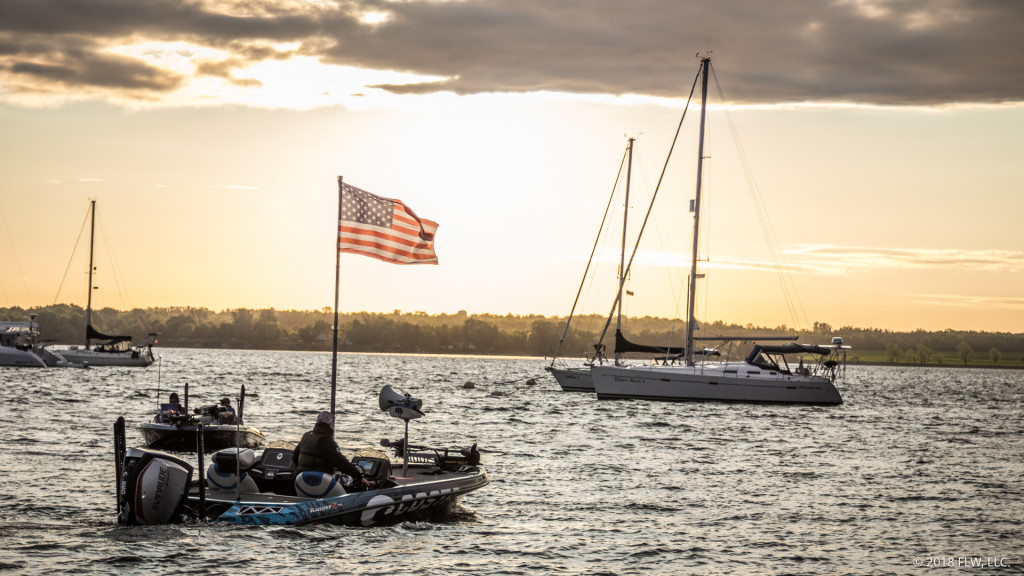
Kicking the season off at Lake Champlain worked great last year, and this year the Costa FLW Series Northern Division is once again getting things rolling on the big Northern lake. Again, there’s a new record field size for the Northern Division with a total of 205 boats. The tournament, which is presented by Power-Pole and hosted by the City of Plattsburgh and the Adirondack Coast Visitors Bureau, should treat anglers and fans to an impressive parade of big smallmouth bass for the next three days.
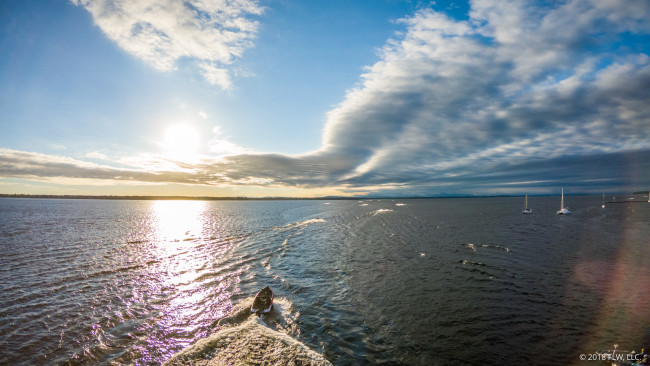
About the fishery
At about 100 miles long, Champlain is really big and has a reputation for great fishing for brown and green bass – and plenty of wind.
The south end of the lake around Ticonderoga (also known as “Ti”) is narrow and mostly shallow. The water is dirtier, and there are big grass beds nearly everywhere. Most of the grass is Eurasian milfoil, but there’s a variety of species present. Though some big smallmouths live in the south end, they are almost never a factor in the summertime. It’s largemouth territory.
The midsection of the lake is deep and clear with some grass. It’s primarily rock and is almost exclusively home to smallmouths and coldwater species that live in the main basin (the lake is more than 400 feet deep in some parts in the middle). The main lake is heavily influenced by wind and usually only factors into tournaments in the spring, when cooler water there delays the smallmouth spawn.
The north end of the lake is broad, clear and has a healthy mix of weeds, rock, and smallmouths and largemouths. Because of the number of islands and bays, the area is a little more manageable in the wind, and there is more shallow water to fish. The Missisquoi River flows into the lake in the northeast corner, and the area around it is dirtier and grassier than the rest of the region. Unlike the south end, where largemouths are the sole target, winning limits of both species can be found within minutes of each other up north. Thus, a common strategy is to catch a limit of healthy smallmouths and then hunt for some kicker largemouths around grass or other shallow cover.
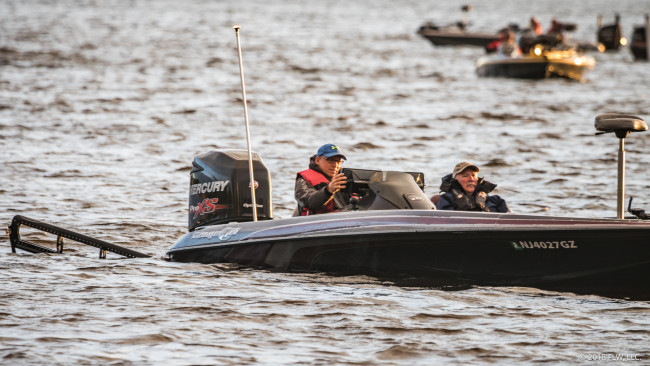
Current conditions
Like in 2017, there are a lot of smallmouths still spawning on Champlain. Depending on where you look, you can find water temperatures ranging from the mid-50s to the low 70s, and there are even some prespawn smallmouths. Some of the largemouths are spawning as well, though most of them are postspawn now.
The lake is in very good shape. It’s a tick cooler than usual for this time of year, and the water level is about normal. That means there is plenty of water in shallow reeds and the like, but because it’s June the grass in many places hasn’t topped out or formed really thick mats.
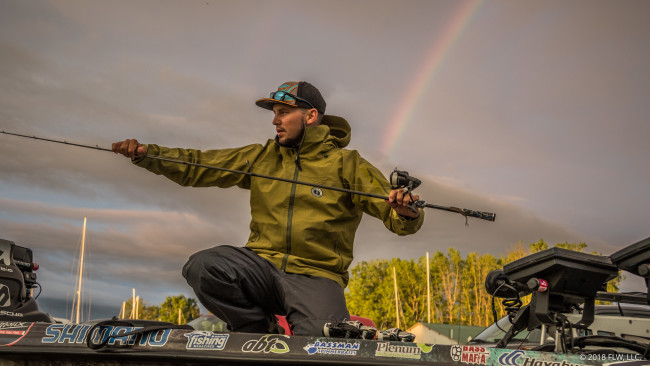
Tactics in play
Spawning smallmouths will eat all kinds of finesse baits, hit a jerkbait and even blow up on a topwater. Other shallow brown fish could be caught on hair jigs, crankbaits or swimbaits. If some deeper smallmouth patterns develop, expect to see Carolina rigs, jigs and drop-shot rigs get a workout.
Largemouths on Champlain are most often found in and around the plentiful milfoil beds, but they can get comfy in other cover, too, from rock piles in the right areas to docks, laydowns, cattails and reeds. Pitching or casting some sort of soft plastic is the most common way to catch largemouths, but vibrating jigs, crankbaits and frogs work in the right situation.
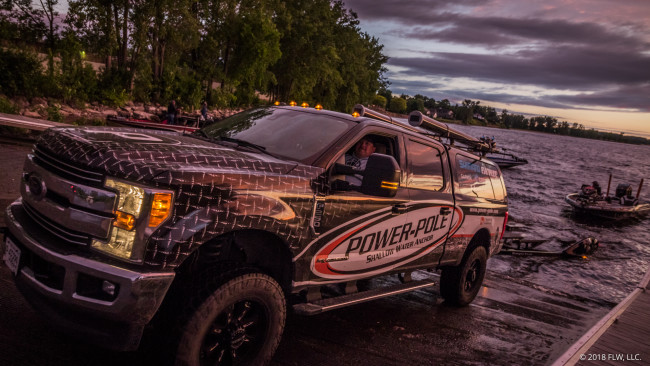
Critical factors
- The wind – Champlain can get pretty rough, making the 60-plus-mile run to Ti a huge ordeal. It also makes spotting bass on beds a challenge. Especially Friday, wind and waves might put a damper on the sight-fishing.
- Boat number – You wouldn’t think that boat number would matter much on Champlain, but an early draw will help someone get to their biggest bedding fish before anyone else does.
- Pressure – This is a bit speculative, but it’s likely that more anglers will be targeting spawning smallmouths than ever before. That could make fish clam up or run out faster than expected.
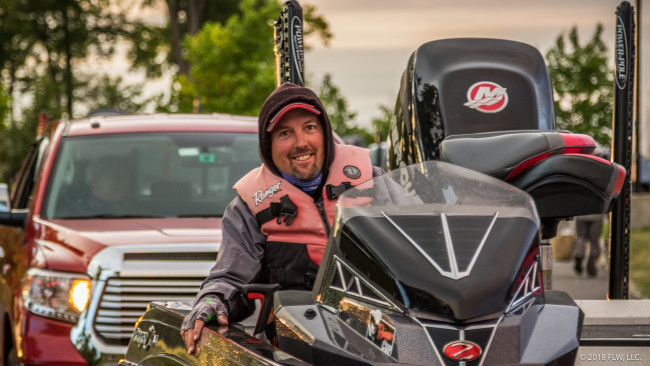
Dock talk
More than any previous year, there’s a sense that this tournament could be won solely with smallmouths that are spawning or very close to it. Usually largemouths or mixed bags take top honors in multi-day tournaments, so this could be somewhat groundbreaking depending on how things turn out.
Brett Carnright finished fifth last year on Champlain and fishes locally as much as anyone.
“I think it’s fishing better than it was last year, but it’s farther behind,” says Carnright of his home lake. “I think the largemouth fishing is pretty bad. The grass isn’t up yet. I don’t think they’re going to play very much this week. There are a lot of smallmouths that need to pull up and spawn, and there are a lot of fish that have spawned.”
Carnright figures that it might take 56 pounds or more to win, and says he’s likely to weigh in 15 smallmouths.
Last year’s champion Ron Nelson also thinks the fishing will be good, and wouldn’t be surprised if the winner had nearly 60 pounds.
“I think the spawn is in full swing even more than last year, but there are fish in all three phases, definitely,” says Nelson. “Last year I had a real short practice, so I only had a half dozen or so fish I needed to catch. This year I have about three times that. But it’ll still be the same strategy – to catch a decent limit of smallmouths and then try for largemouths.”
Tournament details
Format: All boaters and co-anglers will compete for two days. The top 10 boaters and co-anglers based on cumulative weight after two days of competition will advance to the third and final round, with the winner determined by the heaviest cumulative three-day weight.
Takeoff time: 6:00 a.m. ET
Takeoff location: Plattsburgh City Marina, 5 Dock Street, Plattsburgh, NY 12901
Weigh-in time: 2:00 p.m. ET
Weigh-in location: Plattsburgh City Marina